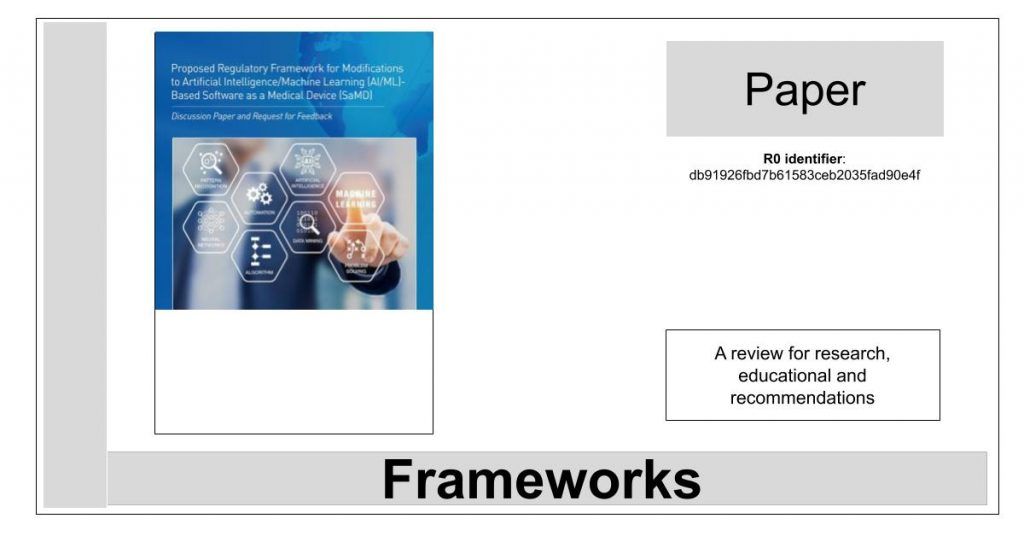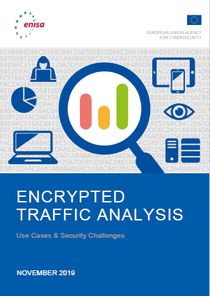Google Engineering Practices Documentation
Google has many generalized engineering practices that cover all languages and all projects. These documents represent their collective experience of various best practices that they have developed over time. It is possible that open source projects or other organizations would benefit from this knowledge.
Artificial Intelligence and Machine Learning in Software as a Medical Device: discussion Paper and Request for Feedback
Artificial intelligence and machine learning technologies have the potential to transform health care by deriving new and important insights from the vast amount of data generated during the delivery of health care every day. Medical device manufacturers are using these technologies to innovate their products to better assist health care providers and improve patient care. The FDA is considering a total product lifecycle-based regulatory framework for these technologies.
Fast-Track Program for COVID-19 Test Development and Distribution
Rapid Acceleration of #Diagnostics (RADx), is a fast-track technology development program that leverages the National Institutes of Health (NIH) Point-of-Care Technology Research Network #POCTRNN).
III CONGRESO AUDITORÍA Y GRC (ISACA Madrid Chapter)
Este congreso, motivado por la creciente sensibilidad de las compañías en materia de Gobierno, Riesgo y Cumplimiento, se enfoca en generar una visión global de los procesos, gestión de riesgos, fraude, control interno y cumplimiento normativo y legislativo, sin dejar de lado la metodología y ejecución de revisiones y auditorías de los mismos
IEEE: Certification Program for Autonomous and Intelligent Systems (ECPAIS) is ready for phase II
#IEEE Invites Companies, Governments and Other Stakeholders Globally to Expand on #Ethics #Certification Program for #Autonomous and #Intelligent #Systems (#ECPAIS) Work
Encrypted Traffic Analysis
This report explores the current state of affairs in Encrypted Traffic Analysis and in particular discusses research and methods in 6 key use cases; viz. application identification, network analytics, user information identification, detection of encrypted malware, file/device/website/location fingerprinting and DNS tunnelling detection.
SciPy Programming Succinctly
The SciPy library, accompanied by its interdependent NumPy, offers Python programmers advanced functions that work with arrays and matrices. Each section presents a complete demo program for programmers to experiment with, carefully chosen examples to best illustrate each function, and resources for further learning. Use this e-book to install and edit SciPy, and use arrays, matrices, and combinatorics in Python programming.
Data Structures Succinctly Part 2
Data Structures Succinctly Part 2 is your concise guide to skip lists, hash tables, heaps, priority queues, AVL trees, and B-trees. As with the first book, you’ll learn how the structures behave, how to interact with them, and their performance limitations. Starting with skip lists and hash tables, and then moving to complex AVL trees and B-trees, author Robert Horvick explains what each structure’s methods and classes are, the algorithms behind them, and what is necessary to keep them valid.
The need for a system view to regulate artificial intelligence/machine learning-based software as medical device
FDA need to widen their scope from evaluating medical AI/ML-based products to assessing systems. This shift in perspective—from a product view to a system view—is central to maximizing the safety and efficacy of AI/ML in health care, but it also poses significant challenges for agencies like the FDA who are used to regulating products, not systems. We offer several suggestions for regulators to make this challenging but important transition









